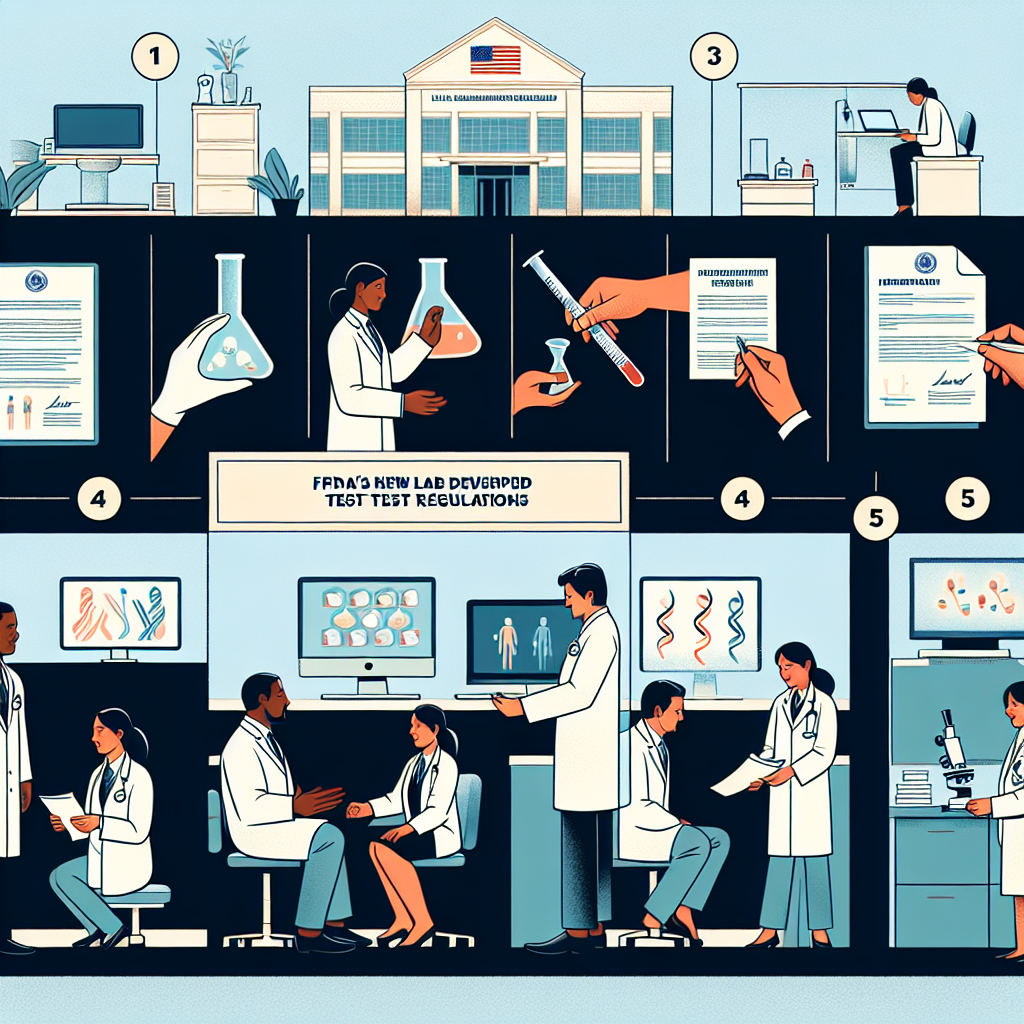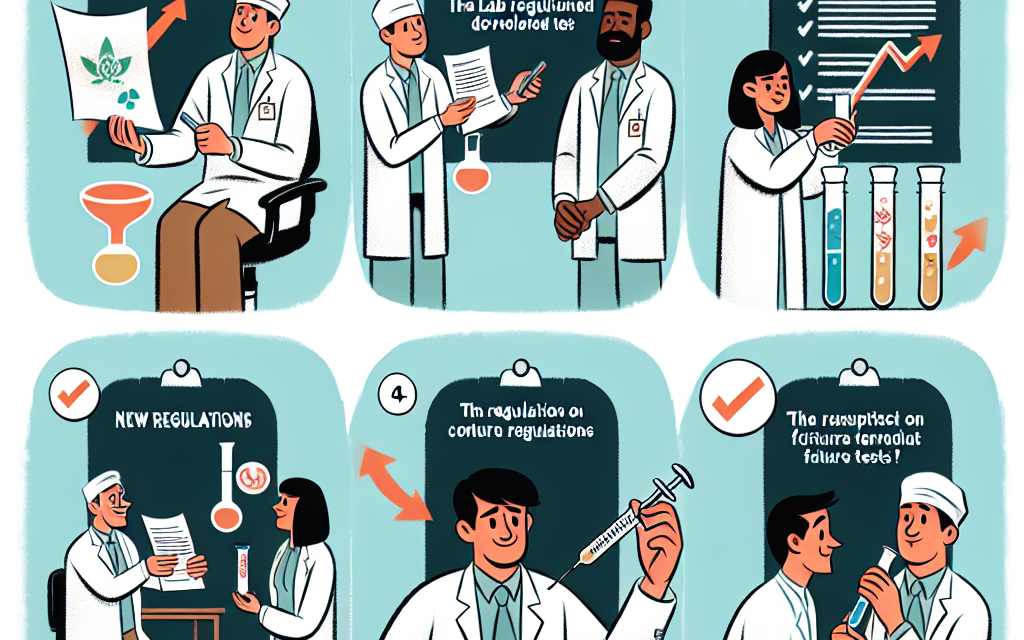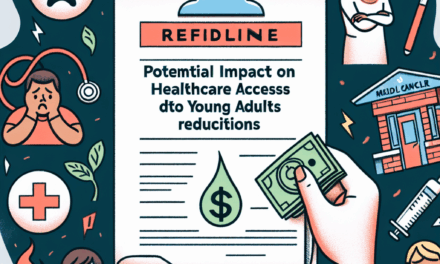A Guide to Understanding the FDA’s New Lab Developed Test Regulations in 5 Steps

In recent years, the landscape of healthcare diagnostics has been rapidly evolving, with Lab Developed Tests (LDTs) playing a pivotal role in personalized medicine. The U.S. Food and Drug Administration (FDA) has recognized the need to update its regulatory framework to ensure the safety and efficacy of these tests. This article provides a comprehensive guide to understanding the FDA’s new regulations on LDTs in five detailed steps. Each section delves into the intricacies of the regulations, offering insights, examples, and case studies to help stakeholders navigate this complex terrain.
Step 1: Understanding the Background and Rationale for New Regulations
The FDA’s decision to update its regulatory approach to LDTs stems from the growing complexity and prevalence of these tests in clinical settings. Historically, LDTs were simple tests developed and used within a single laboratory, but advancements in technology have led to more sophisticated tests that are widely used across multiple healthcare facilities.
One of the primary reasons for the new regulations is the need to ensure patient safety. As LDTs have become more complex, the potential for errors and inaccuracies has increased. The FDA aims to mitigate these risks by implementing a more robust regulatory framework. Additionally, the agency seeks to promote innovation by providing clear guidelines that encourage the development of new and improved tests.
Another factor driving the new regulations is the need for consistency in the quality and reliability of LDTs. With the proliferation of these tests, there has been significant variability in their performance, leading to concerns about their clinical utility. The FDA’s updated approach aims to standardize the evaluation process, ensuring that all LDTs meet high standards of quality and reliability.
To illustrate the impact of these changes, consider the case of a widely used genetic test for cancer risk assessment. Under the previous regulatory framework, this test may have been developed and used without rigorous validation, potentially leading to inaccurate results and inappropriate clinical decisions. The new regulations require comprehensive validation and oversight, ensuring that such tests provide reliable and actionable information to healthcare providers and patients.
- Ensuring patient safety through rigorous validation
- Promoting innovation with clear guidelines
- Standardizing quality and reliability of LDTs
- Addressing variability in test performance
- Case study: Genetic test for cancer risk assessment
Step 2: Key Components of the New Regulatory Framework
The FDA’s new regulatory framework for LDTs is built on several key components designed to enhance oversight and ensure the safety and efficacy of these tests. One of the central elements is the risk-based classification system, which categorizes LDTs based on their potential impact on patient health.
Under this system, LDTs are classified into three categories: low-risk, moderate-risk, and high-risk. Low-risk tests, such as routine blood tests, may require minimal oversight, while high-risk tests, such as those used for cancer diagnosis, will be subject to more stringent regulatory requirements. This approach allows the FDA to allocate resources effectively, focusing on tests that pose the greatest risk to patients.
Another critical component of the new framework is the requirement for premarket review and approval for certain high-risk LDTs. This process involves a thorough evaluation of the test’s analytical and clinical validity, ensuring that it meets the necessary standards before it can be marketed and used in clinical practice.
The FDA also emphasizes the importance of post-market surveillance, which involves ongoing monitoring of LDTs to identify any potential issues or adverse events. This component of the framework ensures that any problems with a test are quickly identified and addressed, minimizing the risk to patients.
To support these regulatory efforts, the FDA has introduced new guidelines for test developers, outlining the necessary steps for compliance. These guidelines provide detailed information on the documentation and data required for premarket review, as well as the procedures for post-market surveillance.
- Risk-based classification system
- Premarket review and approval for high-risk tests
- Post-market surveillance for ongoing safety
- Guidelines for test developers
- Resource allocation based on risk level
Step 3: Navigating the Premarket Review Process
The premarket review process is a critical component of the FDA’s new regulatory framework for LDTs, particularly for high-risk tests. This process involves a comprehensive evaluation of the test’s analytical and clinical validity, ensuring that it meets the necessary standards before it can be marketed and used in clinical practice.
To navigate this process successfully, test developers must first understand the specific requirements for their test category. The FDA provides detailed guidelines outlining the necessary documentation and data needed for premarket review. This includes information on the test’s intended use, performance characteristics, and validation studies.
One of the key challenges in the premarket review process is demonstrating the clinical validity of the test. This involves providing evidence that the test accurately measures the intended analyte and provides clinically meaningful results. Test developers must conduct rigorous studies to establish the test’s sensitivity, specificity, and predictive value.
In addition to clinical validity, the FDA also evaluates the analytical validity of the test. This involves assessing the test’s accuracy, precision, and reliability under various conditions. Test developers must provide detailed data on the test’s performance, including information on potential sources of error and variability.
To illustrate the importance of the premarket review process, consider the case of a new diagnostic test for a rare genetic disorder. Without rigorous evaluation, this test could produce false-positive or false-negative results, leading to inappropriate clinical decisions and potential harm to patients. The premarket review process ensures that such tests are thoroughly validated before they are used in clinical practice.
- Understanding specific requirements for test category
- Demonstrating clinical validity through rigorous studies
- Evaluating analytical validity and performance characteristics
- Providing detailed documentation and data
- Case study: Diagnostic test for rare genetic disorder
Step 4: Implementing Post-Market Surveillance and Compliance
Post-market surveillance is a crucial aspect of the FDA’s new regulatory framework for LDTs, ensuring ongoing safety and efficacy after a test has been approved and marketed. This process involves continuous monitoring of LDTs to identify any potential issues or adverse events that may arise during their use in clinical practice.
To implement effective post-market surveillance, test developers must establish robust systems for tracking and reporting any problems with their tests. This includes setting up mechanisms for collecting data on test performance, as well as procedures for investigating and addressing any issues that are identified.
The FDA requires test developers to submit regular reports on the performance of their tests, including information on any adverse events or deviations from expected results. These reports are used to assess the ongoing safety and efficacy of the test, and to identify any trends or patterns that may indicate a problem.
In addition to reporting requirements, the FDA also conducts periodic inspections of test developers’ facilities to ensure compliance with regulatory standards. These inspections involve a thorough review of the test developer’s quality control processes, documentation, and data management systems.
To illustrate the importance of post-market surveillance, consider the case of a widely used LDT for infectious disease screening. Without ongoing monitoring, this test could produce inaccurate results due to changes in the pathogen or other factors, leading to inappropriate clinical decisions and potential harm to patients. Post-market surveillance ensures that such issues are quickly identified and addressed, maintaining the safety and efficacy of the test.
- Establishing robust systems for tracking and reporting
- Submitting regular reports on test performance
- Conducting periodic inspections for compliance
- Investigating and addressing identified issues
- Case study: LDT for infectious disease screening
Step 5: Preparing for the Future of LDT Regulation
The FDA’s new regulations for LDTs represent a significant shift in the regulatory landscape, with implications for test developers, healthcare providers, and patients. As the field of diagnostics continues to evolve, it is essential for stakeholders to stay informed and prepared for future changes in LDT regulation.
One of the key challenges in preparing for the future of LDT regulation is staying up-to-date with the latest developments in the field. This includes keeping abreast of new technologies, emerging trends, and changes in regulatory requirements. Test developers must be proactive in adapting their processes and systems to meet these evolving standards.
Another important consideration is the need for collaboration and communication among stakeholders. The FDA encourages test developers, healthcare providers, and patients to work together to ensure the safety and efficacy of LDTs. This includes sharing information on test performance, best practices, and potential issues.
To support these efforts, the FDA has established several initiatives aimed at fostering innovation and collaboration in the field of diagnostics. These initiatives include partnerships with industry stakeholders, research institutions, and patient advocacy groups to promote the development of new and improved tests.
To illustrate the importance of preparing for the future of LDT regulation, consider the case of a new technology for early cancer detection. As this technology continues to evolve, it is essential for test developers to stay informed and adapt their processes to meet changing regulatory requirements. By doing so, they can ensure that their tests remain safe, effective, and clinically useful.
- Staying up-to-date with latest developments
- Adapting processes to meet evolving standards
- Collaborating with stakeholders for safety and efficacy
- Participating in FDA initiatives for innovation
- Case study: New technology for early cancer detection
Conclusion
The FDA’s new regulations for Lab Developed Tests represent a significant step forward in ensuring the safety and efficacy of these critical diagnostic tools. By understanding the background and rationale for these changes, navigating the premarket review process, implementing post-market surveillance, and preparing for future developments, stakeholders can successfully adapt to this evolving regulatory landscape.
As the field of diagnostics continues to advance, it is essential for test developers, healthcare providers, and patients to work together to ensure that LDTs remain safe, effective, and clinically useful. By staying informed and proactive, stakeholders can contribute to the ongoing improvement of healthcare diagnostics and ultimately enhance patient care.





